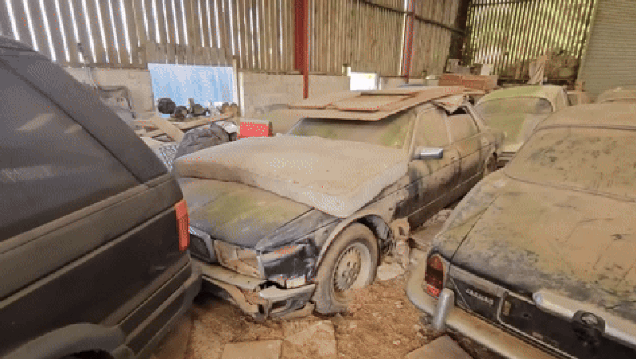The Perception of Car Collectors: A Closer Look at the Stereotypes
Car collectors often find themselves at the center of a contentious debate regarding their true intentions and behaviors. Many people perceive them as individuals who hoard expensive and rare vehicles, locking them away in garages or sheds, never to be driven. This stereotype has been perpetuated by various media portrayals and anecdotal evidence, leading to a general mistrust of car collectors. However, the reality is often more nuanced, and understanding the motivations behind car collecting can shed light on this fascinating hobby.
The Allure of Collecting: What Drives Enthusiasts?
At the heart of car collecting lies a deep-seated passion for automotive history, design, and engineering. For many collectors, acquiring a vehicle is not merely a financial investment but a way to preserve a piece of history. According to a study by the Classic Car Club of America, over 70% of collectors cite their love for cars and the stories behind them as their primary motivation for collecting. This passion often translates into a desire to restore and maintain these vehicles, ensuring that they remain in pristine condition for future generations to appreciate.
Moreover, the emotional connection that collectors have with their cars cannot be underestimated. Many enthusiasts have fond memories associated with specific models, whether it’s a car their parents owned or a vehicle they dreamed of driving as a child. This nostalgia can drive collectors to seek out particular makes and models, often leading to the acquisition of rare and valuable vehicles.
The Reality of Car Storage: Are They Really Just Sitting There?
While the stereotype suggests that collectors simply lock their cars away, the truth is that many actively participate in car shows, rallies, and other events. A survey conducted by the Specialty Equipment Market Association (SEMA) found that nearly 60% of car collectors regularly drive their vehicles, often participating in community events that celebrate automotive culture. These gatherings not only allow collectors to showcase their prized possessions but also foster a sense of camaraderie among enthusiasts.
Take, for example, the case of Magnus Walker, a well-known car collector and designer who has made a name for himself by not only collecting but also driving his vintage Porsches. Walker’s philosophy centers around the idea that cars are meant to be enjoyed, and he frequently shares his adventures on social media, inspiring others to embrace the joy of driving classic vehicles. His approach challenges the notion that collectors are merely hoarders, showcasing how passion can lead to active engagement with the automotive community.
The Impact of Urban Exploration on Car Collecting
Recently, a group of urban explorers unearthed a collection of abandoned cars, including Porsches, Ferraris, and Jaguars, that had been left to rust in a forgotten warehouse. This discovery reignited discussions about the fate of rare vehicles and the responsibilities of collectors. While some may view this as a cautionary tale about neglect, it also serves as a reminder of the importance of preservation and the need for collectors to be mindful of their stewardship over these automotive treasures.
The phenomenon of urban exploration highlights the fine line between collecting and hoarding. It raises questions about how collectors can balance their passion with the responsibility of maintaining their vehicles. Experts suggest that collectors should prioritize regular maintenance and consider the environmental impact of their collections. By doing so, they can ensure that their vehicles remain not only a source of joy for themselves but also a legacy for future enthusiasts.
Navigating the Fine Line: Collecting vs. Hoarding
As the automotive landscape continues to evolve, so too does the conversation around car collecting. The rise of electric vehicles and changing consumer preferences are prompting collectors to rethink their strategies. Many are now focusing on sustainable practices, such as restoring classic cars to electric power or investing in vehicles that have a lower environmental impact.
This shift reflects a growing awareness among collectors about their role in the broader automotive ecosystem. By embracing sustainability, collectors can help dispel the stereotype of being out-of-touch hoarders and instead position themselves as stewards of automotive history who are committed to preserving the past while looking toward the future.
In summary, while car collectors may have a reputation for hoarding, the reality is often more complex. Their passion for automotive history, active participation in the community, and growing awareness of sustainability challenges the negative stereotypes associated with collecting. By understanding the motivations and responsibilities of collectors, we can appreciate the rich tapestry of automotive culture and the role that enthusiasts play in preserving it for generations to come.

